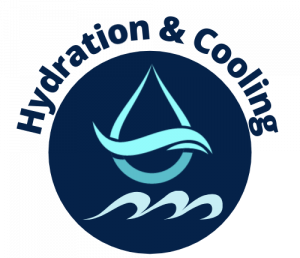Meta Description: Explore our guide to marathon day hydration – covering pre-race prep, race course hydration stations, post-race recovery, and strategic planning for optimal performance.
_______________________________
Proper Hydration for Marathon Day
Pre-Race Hydration Strategy
Proper hydration begins well before the starting gun. In the days leading up to your marathon, gradually increase your fluid intake to ensure your body is fully hydrated. The day before the race, aim to drink water consistently throughout the day without overhydrating, which can lead to hyponatremia (dangerously low sodium levels).
On marathon morning, drink about 16-20 ounces of water or sports drink 2-3 hours before the start. This gives your body time to process excess fluid. In the final 30 minutes before the race, you can sip an additional 6-8 ounces if needed, but avoid drinking large amounts right before starting.
Race Course Hydration Stations
Most marathons provide hydration stations approximately every 1-2 miles along the course. Familiarize yourself with the race map to know exactly where these stations are located and what they’ll be offering (water, sports drinks, or both).
Develop a plan for which stations you’ll use. Some experienced runners prefer to drink at every station, while others may skip some stations based on their personal hydration needs. A common strategy is to alternate between water and electrolyte drinks at successive stations.
Hydration Timing During the Race
Rather than waiting until you feel thirsty, which signals you’re already becoming dehydrated, drink according to a predetermined schedule. Many runners find success taking small amounts of fluid every 15-20 minutes.
The general recommendation is to consume 4-6 ounces of fluid every 20 minutes during a marathon. However, your personal sweat rate, weather conditions, and running pace will influence your specific needs.
Monitoring Your Hydration Status
Learn to recognize the signs of proper hydration versus dehydration. During the marathon, pay attention to:
- Urine color (should be pale yellow)
- Energy levels (sudden fatigue may indicate dehydration)
- Cognitive function (confusion can be a sign of serious dehydration)
- Physical symptoms like dry mouth, headache, or dizziness
If you notice signs of dehydration, increase your fluid intake at the next opportunity. Conversely, if you feel bloated or notice swelling in your hands and fingers, you may be overhydrating and should scale back.
Electrolyte Replacement
Water alone isn’t sufficient for marathon hydration. As you sweat, you lose essential electrolytes—particularly sodium—that need to be replaced. Sports drinks available on the course provide these electrolytes, but many marathoners also carry electrolyte supplements.
Options include electrolyte tablets that dissolve in water, salt capsules, or electrolyte-enhanced gummies and gels. Whatever method you choose, practice with it during training to ensure it works for your body.
Post-Race Recovery Hydration
Your hydration strategy shouldn’t end at the finish line. Proper rehydration is crucial for recovery. Immediately after finishing, drink about 16-24 ounces of fluid for every pound lost during the race (if you have the opportunity to weigh yourself).
Recovery drinks that contain both carbohydrates and protein can help replenish glycogen stores while providing the fluid you need. Continue drinking regularly for the remainder of the day, monitoring your urine color to ensure you’re adequately rehydrated.
Weather Considerations
Adjust your hydration plan based on the expected weather conditions. Hot, humid conditions dramatically increase your fluid and electrolyte needs, potentially by 20-30% or more. Cold weather can mask dehydration as you may not feel as thirsty, so stick to your hydration plan regardless of temperature.
If extreme heat is forecast, consider carrying additional hydration beyond what’s provided on the course, either with a hydration belt or handheld water bottle.
Practice Your Hydration Strategy
The most important advice for marathon hydration is to practice your strategy during long training runs. Your final long runs should mimic race day conditions as closely as possible, including your hydration approach.
Practice drinking while maintaining your race pace, and experiment with different types of containers (cups at aid stations can be challenging to drink from while running). Some runners pinch the top of the cup to form a spout, while others slow briefly to ensure they get enough fluid.
Common Hydration Mistakes to Avoid
- Trying a new sports drink or supplement on race day
- Overhydrating out of anxiety about dehydration
- Underestimating fluid needs in cool weather
- Relying only on water without electrolyte replacement
- Drinking large amounts right before the race starts
- Skipping hydration stations early in the race when you “feel fine”
By developing and practicing a personalized hydration strategy, you’ll be well-prepared to maintain optimal performance throughout your marathon journey. Remember that proper hydration is highly individual—what works for another runner may not work for you. Experiment with different hydration methods during your training runs to discover what best suits your body’s needs. Additionally, consider incorporating fourseason hydration tips, ensuring you’re meeting your hydration needs throughout various temperatures and conditions. Staying attentive to your body’s signals can make a significant difference in your marathon experience.
